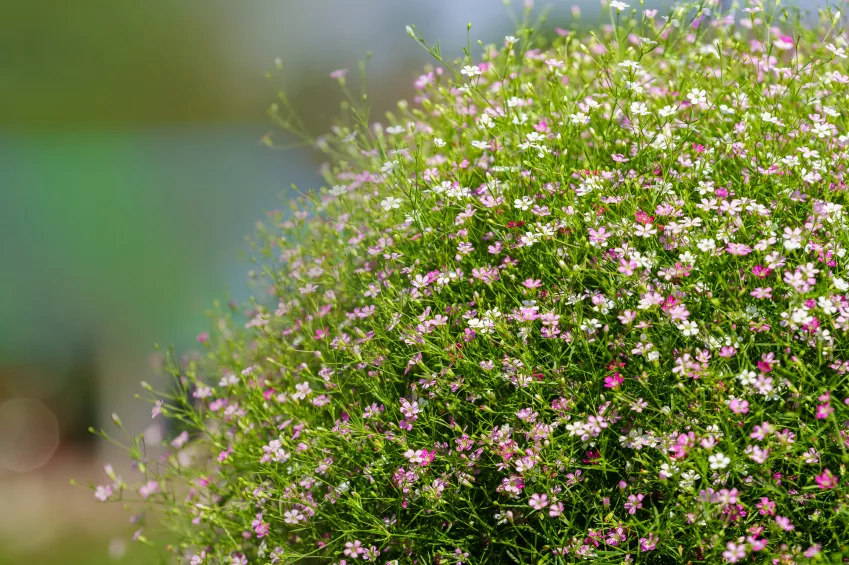If you want to propagate your gypsophila, we recommend dividing the plants in spring or taking cuttings. However, the division does not work equally well for all varieties. However, it is worth a try.
 Gypsophila can be propagated by division, sowing or cuttings
Gypsophila can be propagated by division, sowing or cuttings
propagation by division
Propagation by division is not easy and not always crowned with success. You have the best chances if you share the roots. Be careful not to damage the fleshy solid parts of the roots. Take the root tears instead. Cut these root pieces straight on the side facing the mother plant. Make an oblique cut on the other side.
Now put this root with the diagonal cut down in a pot with a nutrient-poor substrate. Sprinkle some sand on the upper cut surface and moisten everything a little. When the first leaves appear, you can plant the gypsophila in the garden. In the early days, these young plants should not be in the blazing sun.
Propagation by cuttings
In spring, take some 10-15 cm long cuttings from your Gypsophila. These cuttings should have at least three pairs of leaves and are best cut below a leaf node.
Remove the lower leaves and place the cuttings about halfway into a pot with nutrient-poor substrate or a mixture of soil and sand. After moistening, place the cuttings in a bright place. Only when they are well established and have formed roots are they allowed to go outdoors. Do not overwater your cuttings or they will begin to rot.
The sowing of gypsophila
The annual varieties of Gypsophila in particular are propagated by sowing. But you can also sow the perennial gypsophila (lat. Gypsophila paniculata). Sow in pots or directly outdoors, depending on your preferences. The period from March to June is recommended for sowing outdoors.
The essentials in brief:
- division is difficult
- Protect cuttings from moisture
- Do not moisten the seed too much
tips and tricks
Protect your young plants from the blazing sun and water the plants only a little.